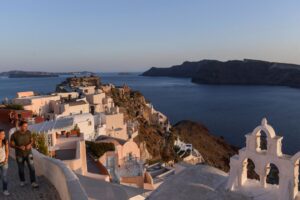Thousands of people have had their say on a controversial beach row that has split a picturesque Merseyside town in two.
When a hotly-contested decision was made to stop spraying weed killer on Hoylake Beach by Wirral Council, the future of the beach remained a big question for those in the affluent town. The beach is an environmentally protected area and there are claims rare plants have been found on it, which would mean there would be restrictions on how much can be cleared.
If the council had continued to spray glyphosate weed killer on the beach, it could have faced an unlimited fine.
One campaign group in Hoylake wants to see some or all vegetation removed along a stretch of the beach. Another group wants to see vegetation allowed to expand undisturbed and develop into salt marsh or sand dunes.
Over the summer, Wirral Council surveyed thousands of people from Wirral and further afield about their priorities for the beach and how they would like to see it managed.
3,199 people responded with more than 1,100 from Hoylake and Meols and more than 2,000 from across Wirral. Cllr Liz Grey, chair of the council’s Environment Committee said it was one of the most extensive consultations the local authority had ever done.
The council has now presented two options based on these results which will then go back to the public. Both options could cost the council up to £20,000 a year and the cost so far to come up with a plan for the beach has been more than £20,000.
Both proposed options would leave existing vegetation in place but would see future vegetation removed as the beach further develops. These options will be discussed at an Environment Committee meeting next week.
Natural England, a public body that advises the government on environment regulations, will need to approve the final option chosen by the public before the council can move forward. The two options proposed are considered most likely to be approved but Natural England said it does have concerns.
In its response, Natural England said it may be possible to maintain an area of the beach for leisure as well as introduce boardwalks to provide access to the beach beyond the vegetation.
However it said that a full clearance of the beach to something similar to pre-2019, supported by 36.3% of people from Wirral, was “unlikely to be compatible with the conservation objectives of the sites through destruction of the habitat and alteration of the natural processes.”
It added that any vegetation control would have to be “subject to adequate assessment and consents and would need to be very targeted, tightly controlled and monitored” and restricted by the beach’s conservation status.
The response to the consultation was mixed with no clear majorities for either camp on how the council should move forward with the beach – though there was support for a middle ground. While 36% of Wirral residents strongly supported returning the beach to how it was in 2019, 73% also said they wanted the beach left at least partially natural with 37% saying they wanted it completely natural elsewhere in the consultation.
There were also big differences between the overall response and the response among people from the Wirral. Overall most people agreed to allow the beach to develop with no maintained access from the road with more than half in favour. However this was the least popular option among those from Wirral though locally the response was more mixed.
Wirral residents also said the beach was a “valuable open space for the community” and local ecology was a top priority. There was also significant support for a balance to be found between the natural environment and local business.
Concerns were raised about issues related to mosquitos, vermin, stagnant water, and insects as a result of beach management but 46% said they did not want hazards at Hoylake to be managed differently from other beaches.
People will then be asked for their opinion on the final two options if councillors approve the options next week with the end to the consultation expected by spring 2023.
Source : Echo



























